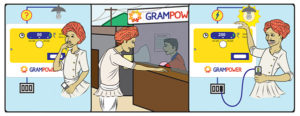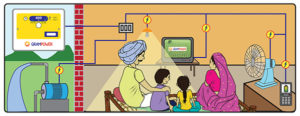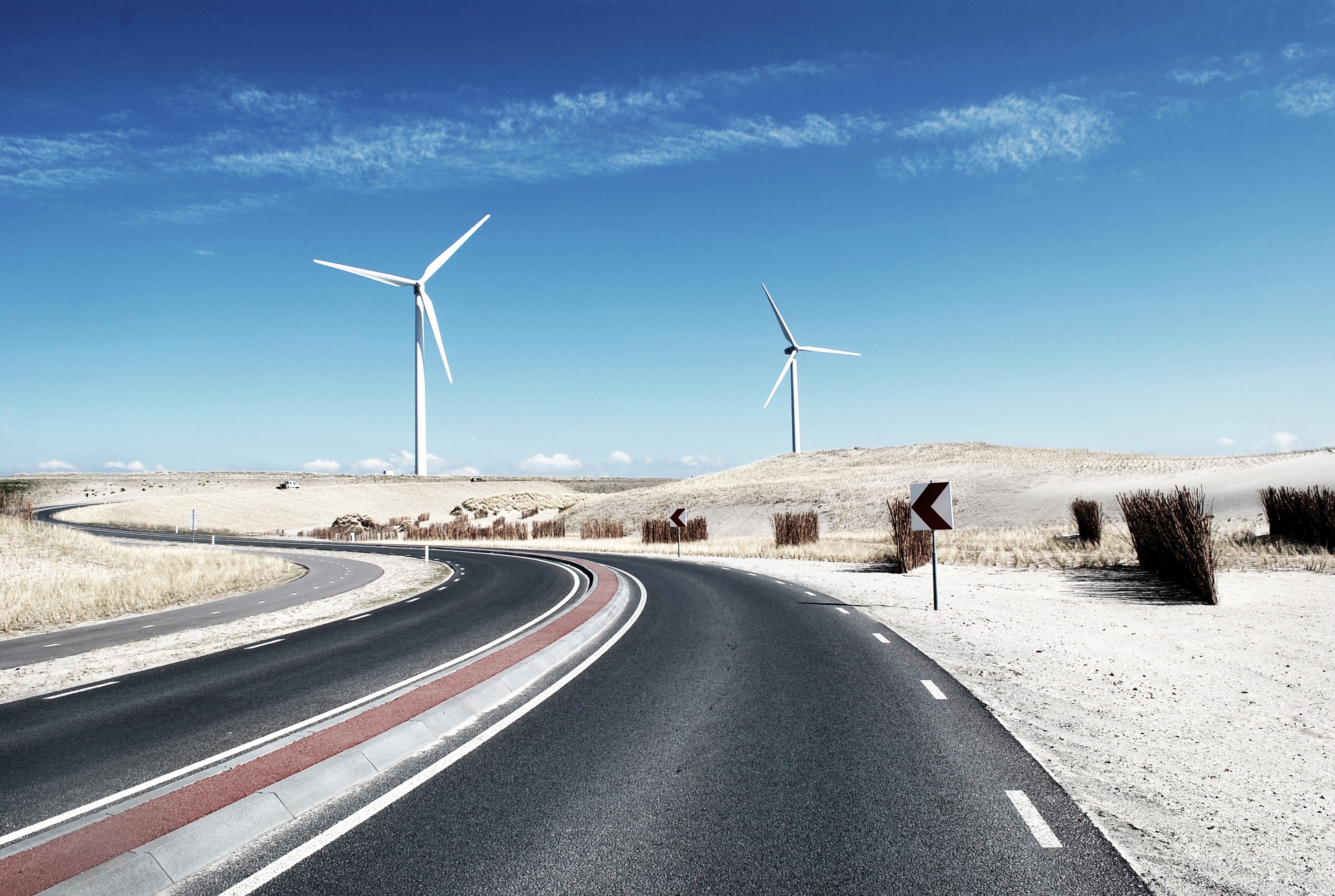Understanding Energy Sector and Cleantech with Gram Power
Sole aim of technology is to make lives better, happier and more efficient. But if that technology itself becomes a threat to earth and environment that are needed for our very existence then what would be the use of such technology if we won’t even exist to use it!!
 Good news is that many start-ups that are coming up in Energy Sector in India are working towards Cleantech. One of such start-ups is Gram Power which is providing technology to eliminate barriers to affordable energy. Founded in 2010 by Yashraj Khaitan (an Indian), and Jacob Dickinson (an American), Engineering graduates of University of California-Berkeley, Gram Power’s Smart Micro grid provides affordable single/three phase power to remote villages at less than 30% cost of grid extension. They have developed many innovative solutions to cater to energy sector. Their smart meters are part of the Smart city Vishakhapatnam project and now they are working with other states as well.
Good news is that many start-ups that are coming up in Energy Sector in India are working towards Cleantech. One of such start-ups is Gram Power which is providing technology to eliminate barriers to affordable energy. Founded in 2010 by Yashraj Khaitan (an Indian), and Jacob Dickinson (an American), Engineering graduates of University of California-Berkeley, Gram Power’s Smart Micro grid provides affordable single/three phase power to remote villages at less than 30% cost of grid extension. They have developed many innovative solutions to cater to energy sector. Their smart meters are part of the Smart city Vishakhapatnam project and now they are working with other states as well.
Reading about them made me quite intrigued and I got an opportunity to interview their Business development head Mr. Aashwin. Here is the interview, I hope you enjoy reading it.
Aashwin, first of all I would like to know how did the idea of Gram power came into being?
Our Founder Yashraj Khaitan was graduating from Berkeley, he with his friend were part of the foundation where they were doing social entrepreneurial work in rural India, so it was then that they started with setting up mini grids in rural India. The major challenge they faced was that people started acting very careless while using the electricity. When a solar plant is planned a designated amount is fixed for every household. So as part of micro grid, a sanctioned amount of electricity was planned for each household, which included a provision of 1 light (10 w), 1 fan (40w) and 2 (5 amp) sockets, but people started using tv, motor, and other appliances. As a result energy store at the battery bank used to drain off faster and all the houses were not getting electricity.
Then another major issue was that people didn’t use to pay for the electricity they had used.
So to solve this problem a device had to be planned which could limit the load each household could take from the grid. Then another major issue was that people didn’t use to pay for the electricity they had used. We needed a meter but it was not feasible to go there every time to take the reading and collect the amount. So to cater to all these problems a meter was designed which could restrict the load limit for each household and had a prepaid system in which the households needed to pay the amount prior to using the electricity. Whenever the credit amount gets over or the load exceeds the sanctioned limit, the meter automatically cuts down the supply.
Interesting but were the people in the villages fine with paying the amount prior to using the electricity?
Besides we made sure that for every village we found a person from the community itself who would be doing the recharge for that community. So the trust factor was easily developed
 Yes, we didn’t face much trouble in that since the tariff was kept very low. Besides we made sure that for every village we found a person from the community itself who would be doing the recharge for that community. So the trust factor was easily developed. This whole meter system was so stable and worked in all the weather conditions so people started trusting it more and the project finally became successful.
Yes, we didn’t face much trouble in that since the tariff was kept very low. Besides we made sure that for every village we found a person from the community itself who would be doing the recharge for that community. So the trust factor was easily developed. This whole meter system was so stable and worked in all the weather conditions so people started trusting it more and the project finally became successful.
Since Gram Power is working in the energy sector since 2010, what do you think is the major challenge of the energy sector in India especially in rural India?
Rural electrification comes under Ministry of Renewable Energy and electricity as subject comes under Ministry of Power. Ultimate motive of putting up micro grid in rural India is that in future when the area can be connected to electricity grid so same infrastructure can be utilized, which would not only reduce the overall cost of the project but would also expedite the process. But since there are two different ministries involved in the process, there is no proper coordination between the two.
If both the Ministries can derive some policies together for the infrastructure and if Ministry of Power can share with the Ministry of Renewable Energy their prospective list of electrification for the next five years then MnRE can start creating solar infrastructure for those areas following the guidelines of Ministry of Power. If this can happen then it will be a win win situation for all.
Life of solar plant and its infrastructure starts depleting exponentially after 5 years and many times Ministry of Renewable Energy does not keep this in mind and uses infrastructure which can not be used for longer duration. Some times Ministry of Power simply ignores the existing infrastructure already present, saying its not of good quality. If both the Ministries can derive some policies together for the infrastructure and if Ministry of Power can share with the Ministry of Renewable Energy their prospective list of electrification for the next five years then MnRE can start creating solar infrastructure for those areas following the guidelines of Ministry of Power. If this can happen then it will be a win-win situation for all. Since after 5 years O & M costs of solar plants goes very high that it does not remain very feasible, so if that time Discom can reach those areas and connect them to the main grid using the same infrastructure then India would have more electrified areas and that too at way low cost than what it is now.
What do you think would be major challenges in implementing Smart meters and Grid that Gram Power has created in all the rural areas of India?
Another problem is developing the sense of ownership, which generally is very low for public property. To solve this we came up with a model where the Panchayat of the village would buy it from us and the villagers had to pay directly to the Panchayat and nothing to us.
Major challenge would be demographic, there are areas where it is so difficult to convince people that if they need electricity they would have to pay for it and they would have to take ownership for the system. For this we have to mobilize the community, tell them how they can establish a community centre which will have electricity connection and they can use that centre for various purposes.
Another problem is developing the sense of ownership, which generally is very low for public property. To solve this we came up with a model where the Panchayat of the village would buy it from us and the villagers had to pay directly to the Panchayat and nothing to us. This way there was one person from the village itself who was responsible to take care of the solar plants, so that cattle don’t spoil it or people don’t urinate on the panel or somebody doesn’t destroy the system.
Apart from this, there were geographic challenges. If you want to establish a plant and the house in the villages are very scattered then there would be transmission losses. If for example there is a cluster of house at one place but there is a single house which is in the fields, then you will have to put a line specially for that single house which would increase the cost by many folds. Because if you ignore that house then its owner would create huge issue. Another really big challenge that we have to face at times is that people are not ready to have solar power for their villages. They feel that electricity from solar grid would only be for some time (on an average they get around 9-10 hours electricity) and if their village would have solar power then may be their village won’t get connected with the main grid, so they say they are fine without electricity then have solar electricity.
What do you think is the future of Cleantech and what do you think would be the role of Gram Power in that?
Cleantech in my understanding has two parts, one is to have sustainability, that our next generation is also able to use the resources that I am using and second is about reducing carbon print. I feel India is ready to adopt Cleantech, its just that probably in the starting to mobilize people towards it, benefits would need to be told which have some personal gain. For example solar boom came in India when people were told that they can install plant on the roof and they can sell the extra electricity to the grid and earn in return.
I feel India is ready to adopt Cleantech, its just that probably in the starting to mobilize people towards it, benefits would need to be told which have some personal gain.
 Cleantech energy in the beginning is capital intensive so to encourage people to go towards Cleantech, Govt. would have to make some amendments in the policies so that they are more user friendly. For example if Electricity board people install your solar panels themselves and instead of making full payment in the beginning if people are allowed to pay rentals of solar with their other electricity bill then it will be more successful as paying Rs. 100-200 per month won’t pinch but paying an amount of 5 lakh would. This way a new solar energy division is created in the same electricity board, secondly people would get genuine panels and parts and installation would also be properly done. Otherwise these days anyone is entering the Solar Energy sector and is giving products and service which is not upto the mark, which is only making people loose their trust on solar energy.
Cleantech energy in the beginning is capital intensive so to encourage people to go towards Cleantech, Govt. would have to make some amendments in the policies so that they are more user friendly. For example if Electricity board people install your solar panels themselves and instead of making full payment in the beginning if people are allowed to pay rentals of solar with their other electricity bill then it will be more successful as paying Rs. 100-200 per month won’t pinch but paying an amount of 5 lakh would. This way a new solar energy division is created in the same electricity board, secondly people would get genuine panels and parts and installation would also be properly done. Otherwise these days anyone is entering the Solar Energy sector and is giving products and service which is not upto the mark, which is only making people loose their trust on solar energy.
I was amazed to find out that even today the curriculum books in schools just teach students about solar cooker and such appliances whereas if they from the early stage are taught about the benefits of solar power plant and the latest technologies then we can expect a more informed and rational future for our country.
Besides Govt. should make it mandatory for a particular sized buildings to have solar panels. And to make this initiative successful, people would have to be made aware about Cleantech and that is only possible one they will use it and experience the benefits, which further depends on the affordability and convenience to use it. Only then Cleantech can sustain in India. And if India truly wants to be a pioneer in Cleantech then it will have to aim to become Carbon negative and without people being truly an important stakeholder in the process it can not happen. I was amazed to find out that even today the curriculum books in schools just teach students about solar cooker and such appliances whereas if they from the early stage are taught about the benefits of solar power plant and the latest technologies then we can expect a more informed and rational future for our country. Till the time a more holistic ecosystem is not developed Cleantech can not be successful.
What do you think about the state of Innovation sector in India?
Until and unless we work on creating an ecosystem that supports innovations from the perspective of Indian Market, innovation sector won’t grow.
People in India are very sceptical about something that is new. People would buy Nike or Adidas shoes even if there is a new company which is offering better shoes even at reasonable rate. Bigger companies have so much marketing infrastructure that small innovators find it almost impossible to reach out to people. So companies which have conventional stuff is able to sell more than start-ups which are trying to innovate. Until and unless we work on creating an ecosystem that supports innovations from the perspective of Indian Market, innovation sector won’t grow.
Based on your experience which media do you think can work better for Innovative start-ups to reach maximum number of people?
For the start it will be better to go for direct activity for a selected group as these are the people who truly care about what you are saying. Since they already have interest in that so it will be easier to nurture it further. But these people are not many in number so investing on mass idea to reach them would not give a good return on investment in the beginning. To reach them it will be good to conduct events where in you can engage them or be a part of groups, portals, communities where these people already are. Secondly now a days making smart use of digital media is not only necessary but also more effective as well. So I would suggest a combination of Digital media and creating a direct contact to reach maximum number of people would work best.
Finally, Aashwin what will be your message to budding entrepreneurs?
My advice to budding Innovators or Entrepreneurs would be to grow organically and don’t force the growth. Start-ups generally have young team whose enthusiasm can make them reach at the top but to sustain that growth they would need experience. That is the point when the startup die down.
One thing which I feel is indispensable for success is persistence. When the startup starts growing exponentially, their expenses also start growing. And if any dip comes in the growth then most of them find it very difficult to survive because of lack of experience to deal with such situation. With growth its very important to handle expenses very cleverly. My advice to budding innovators or entrepreneurs would be to grow organically and don’t force the growth. Start-ups generally have young team whose enthusiasm can make them reach at the top but to sustain that growth they would need experience. That is the point when the startup die down. If they don’t force their growth or profit then there is a better chance for the company to succeed. That is what we have followed in Gram Power as well. I am very sure about my product and about the fact that at the price point that I will give it no one else in the market can. So I just share the idea, I do not over sell or force them and then they automatically come back. So focus on developing a better product rather than focusing on forced growth.”
Indeed an insightful talk. It was amazing talking to Aashwin because what he told were not just perspectives or theories but true and exact ground realities. After this interview I have developed a more clearer understanding about an innovator’s journey and also about the energy sector in India. And I hope you would find this article as useful as I enjoyed taking it
Ashwin also shared with me that they have developed a meter system which through an app would not only help you know about your exact energy usage but also help you find out which are the appliances that are causing a deeper hole in your pocket.
If you want to know more about them and their technologies, write to us at info@inkyacollaborative.com
Stay Inspired because the unexpected begins with U 🙂










